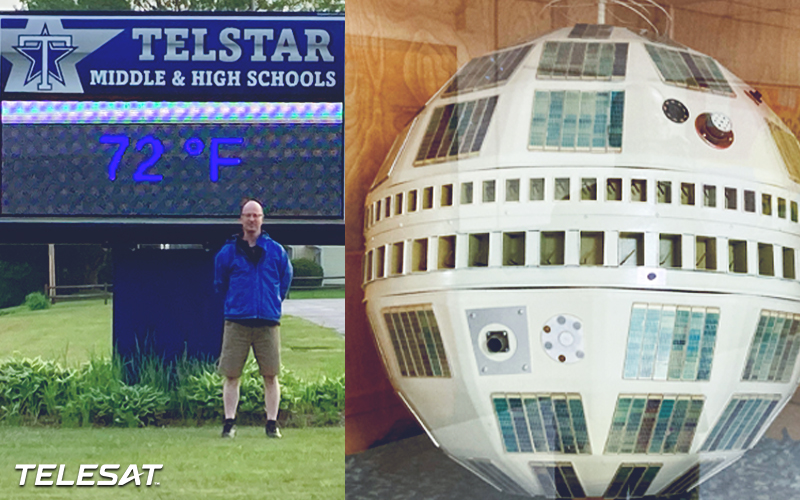Sometimes life reveals previously unknown connections that, on discovery, might feel predestined – or even cosmic. I recently had such an experience during my travels.
First, a bit of background. I’m a satellite operations engineer with Telesat, and have been working with the company for 26 years, responsible for overall health, monitoring and safe operations of numerous satellites.
Every year or two, I drive through Maine on my way to New Brunswick, Canada. Our family has always enjoyed a trip through the north-eastern US, with a half-way stop in nearby Gorham NH, among the White Mountains.
Our route usually passes by, not through, the town of Bethel in Maine, along US Highway 2. This year, we decided to explore the town and happened to notice a billboard near downtown Bethel supporting the Telstar Rebels, the team name of the local Telstar High School. With a name as unique as “Telstar”, my satellite senses tingled. I never would have guessed there was a school named after the famous Telstar satellites, or that this county hosted the Andover Earth Station that once supported satellite communications.
For a bit of history, the first two Telstar satellites were launched in the early 1960s, and belonged to AT&T as part of a multinational agreement among telecom companies and governmental organizations.
Those initial satellites looked like something out of the movie Star Wars. Packed with new technology that launched us into a new era of communications, Telstar 1 and 2 made history multiple times, including:
- The first live, transatlantic television signal
- The first public broadcast
- The first satellite telephone call
- The first synchronization of time between the US and UK
The successes continued, with multiple Telstar satellites having been launched over the years by AT&T Skynet, which later became Loral Skynet. Telesat merged with Loral Skynet in 2007 — so now I work for the company that operates the namesake satellites of Telstar High School.
This is why, when I saw that billboard, we took a quick diversion to stop at the school. I briefly spoke with a few Telstar teachers, who graciously let me take a photo of the glass-encased model of Telstar 1.
Today, I’m proud to say that Telesat manages the operations of 5 Telstar branded satellites to provide international satellite services, as well as 10 additional satellites under the brands Anik and Nimiq for Canadian and Americas services. They deliver communications capacity to meet the needs of broadcasters, telecom operators, enterprises and government organizations. And as we continue innovating with Telesat Lightspeed, our Low Earth Orbit (LEO) satellites, the Telstar fleet provides proof that our expertise in connectivity is deeply rooted.
Finally, I’m hoping to strengthen our connection with Telstar High School. I have offered to provide an annual Satellite 101 presentation to final-year science students who may be interested in STEM careers. Hopefully they will be inspired to not only learn more about their school’s name, but also pursue careers that continue to advance satellite communications.



